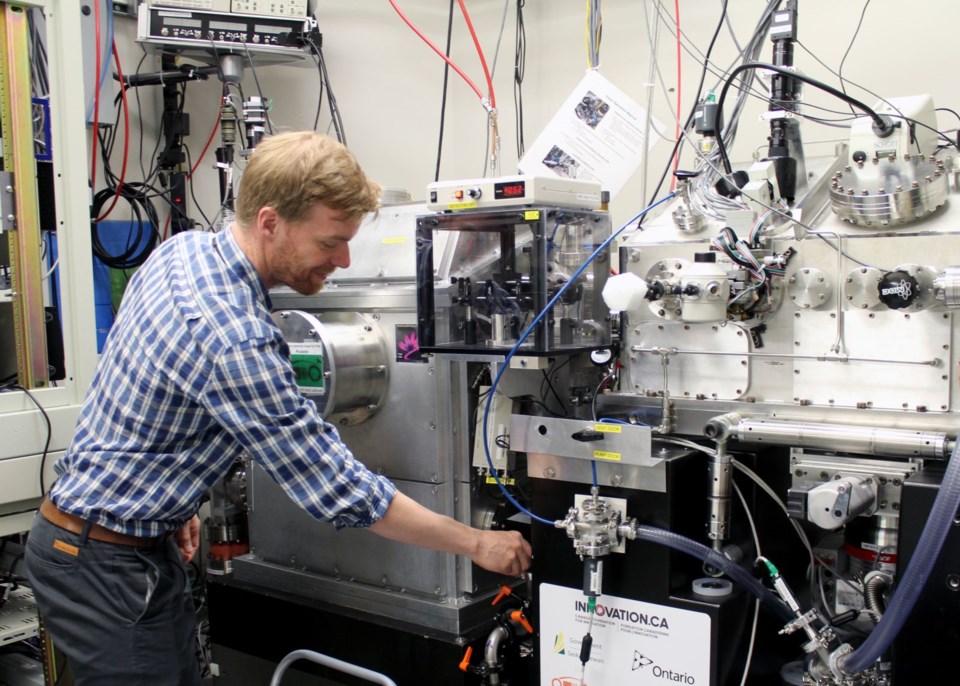Researchers are using synchrotron light to better understand the impact of climate change on more than three trillion metric tonnes of soil carbon around the world.
Using the Canadian Light Source (CLS) at the University of Saskatchewan, scientists from across the United States investigated the plant root mechanisms that control long-term storage of carbon in deep soil. Their findings will have ramifications for global industries such as agriculture, which have touted the benefits of carbon sequestration as their contribution to fighting climate change.
“The significance of our work is we not only show that plants are conduits of carbon into the soil, but the roots also regulate how much carbon the deep soil can store or lose,” said Dr. Marco Keiluweit, a biogeochemist at the Stockbridge School of Agriculture in the University of Massachusetts.
Although root-derived organic compounds such as decaying roots, plant stems and trunks are recognized as an important source of soil carbon, the role of roots as a weathering agent that breaks down rocks and primary minerals has been overlooked, according to Keiluweit.
Not only does root-driven weathering help to sequester carbon on soil minerals for centuries or longer, but it can also release stored carbon from minerals, which is then lost to the atmosphere as climate-active carbon dioxide.
Climate change influences how plants interact with soil, Keiluweit noted, with the increased concentration of atmospheric carbon dioxide leading to faster plant growth and producing more root growth and root biomass.
“What we are showing here is that roots influence the formation of helpful mineral-organic associations by providing some of the minerals that can engage with organic matter, but then at the same time can destroy or disrupt some of these protective associations in later years,” said Keiluweit.
“The role of the CLS in the project was critically important because it helped us resolve micron-scale mineral-organic associations,” Keiluweit said. “The CLS enabled us to identify both the nature of organic matter and the nature of minerals, and their physical arrangement together in mineral-organic associations.”
As for the impacts of the finding, Keiluweit points to the agricultural sector as an example. When you consider root activity in deeper soil, the question becomes one of the net effect—are you forming protective mineral-organic assocations or destroying them, he said.
“Periodic droughts impact agriculture systems and, currently, a lot of effort goes into developing and planting crops that are deeper rooting to access water,” he said. “Deeper roots are better for yields, but it may release carbon that has been protected at depth.”
“On the flip side, our findings can also identify soils with potential for increased carbon storage at depth. Then you can have crops that not only extract water but also help deep storage of carbon,” Keiluweit added.
He hopes their study will help the agriculture sector to consider what crops and soil will be best for combatting climate change.
Keiluweit is the corresponding author of his group’s recent paper, Root-driven weathering impact on mineral-organic associations in deep soils over pedogenic time scales, published online by ScienceDirect. His graduate student, Mariela Garcia-Arredondo, is first author, and some of the group’s research was conducted using the spectromicroscopy (SM) beamline at the Canadian Light Source.
The study team members are: Keiluweit, Garcia-Arredondo and Morris Jones (University of Massachusetts); Corey Lawrence and Marjorie Schultz (United States Geological Survey); Malak Tfaily (University of Arizona); Ravi Kukkadapu (Pacific Northwest National Laboratory); and Kristin Boye (Stanford Synchrotron Radiation Lightsource).��
��




